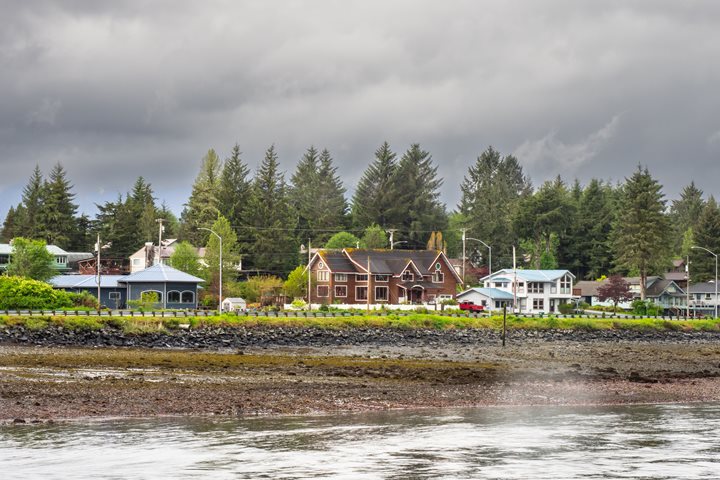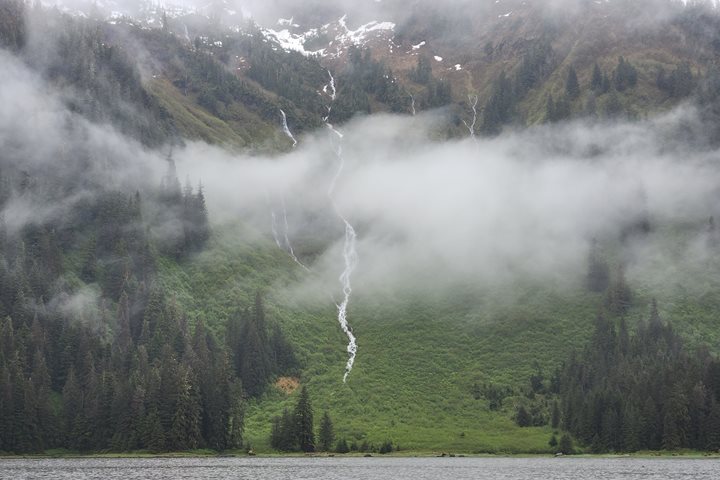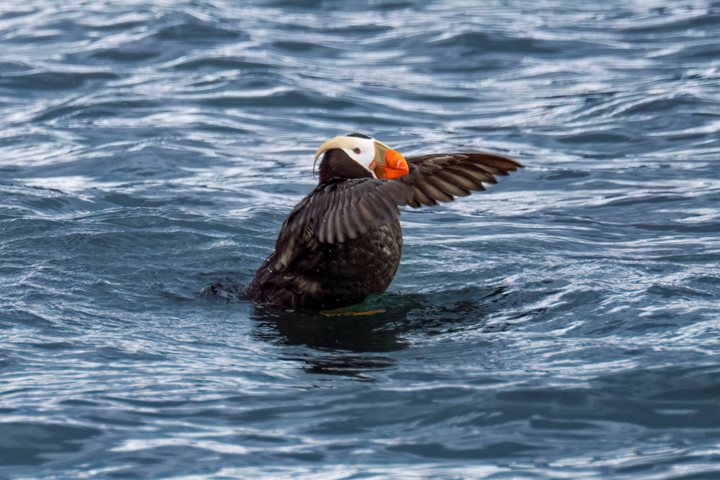We left Bartlett Cove early this morning after acquiring three new ship mates, rangers Emma Johnson and Janene Driscoll of the National Park Service and our Tlingit cultural heritage guide, William-Horton Garrison. Each helped us in their own way to better understand and appreciate this extraordinary and beautiful land.
It’s hard to choose a highlight from a day filled with such beautiful landscapes and wildlife. Approaching South Marble Island, we observed a pair of humpback whales feeding in the distance. Bird enthusiasts here enjoyed a range of delights, including sightings of black–legged kittiwakes, pigeon guillemots, pelagic cormorants, common murres, and both horned and tufted puffins. The relative isolation of the island provides a perfect location to nest and rest for these pelagic sea-birds. The rock is also a haul-out for stellar sea lions whose guttural growl could be heard along with the cry of the kittiwakes.
At gloomy knob, the composition of the ancient dolomitic marble retards the growth of larger trees providing nearly barren slopes and excellent habitat for mountain goats. We found our first goat resting high on a steep slope above the sea. Three more were seen near the top of the ridge as we slowly sailed past. The trained eye of our exposition leader spied a large brown bear sow with three oh-so-cute cubs resting on a ledge about 25 feet above the sea. We were rewarded later with a rare and intimate view of mamma bear nursing her cubs and then teaching them to forage along the shore.
Sailing further into the park, we passed distant peaks and glaciated valleys and then turned west around Jaw Point into Johns Hopkins Inlet. Geology takes center stage here with bedrock exposures of magmatic intrusions cutting ancient sea-floor sediments and metamorphic rocks all laid bare by the erosive power of the Johns Hopkins and Gilman Glaciers. These two tidewater glaciers are rare indeed as they are currently defying global and regional trends by advancing into the water of Glacier Bay. We saw and heard several dramatic examples of this glacial activity when large blocks cracked and calved off the ice face and into the water sending waves that rocked the National Geographic Sea Lion.
On our return to Bartlett Cove a detour was arranged into Geikie Inlet where we were rewarded with additional if distant views of mountain goats and our first black bear foraging along the waterline. Later our guests Janene, Emma, and William entertained and informed us with presentations on natural history and the cultural heritage of the Tlingit people. We ended our day of adventure with a peaceful after-dinner stroll through the grounds surrounding the park headquarters.










